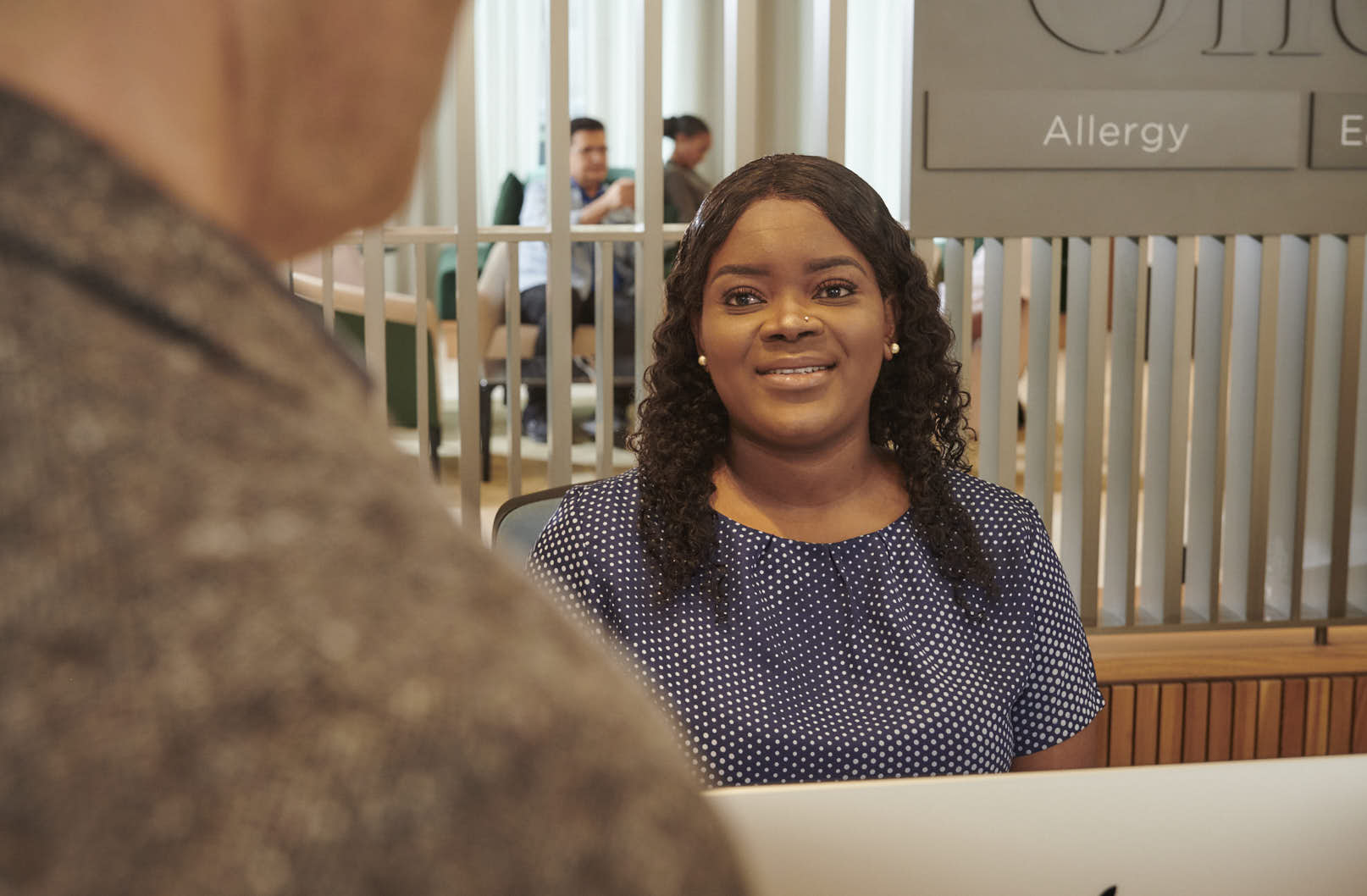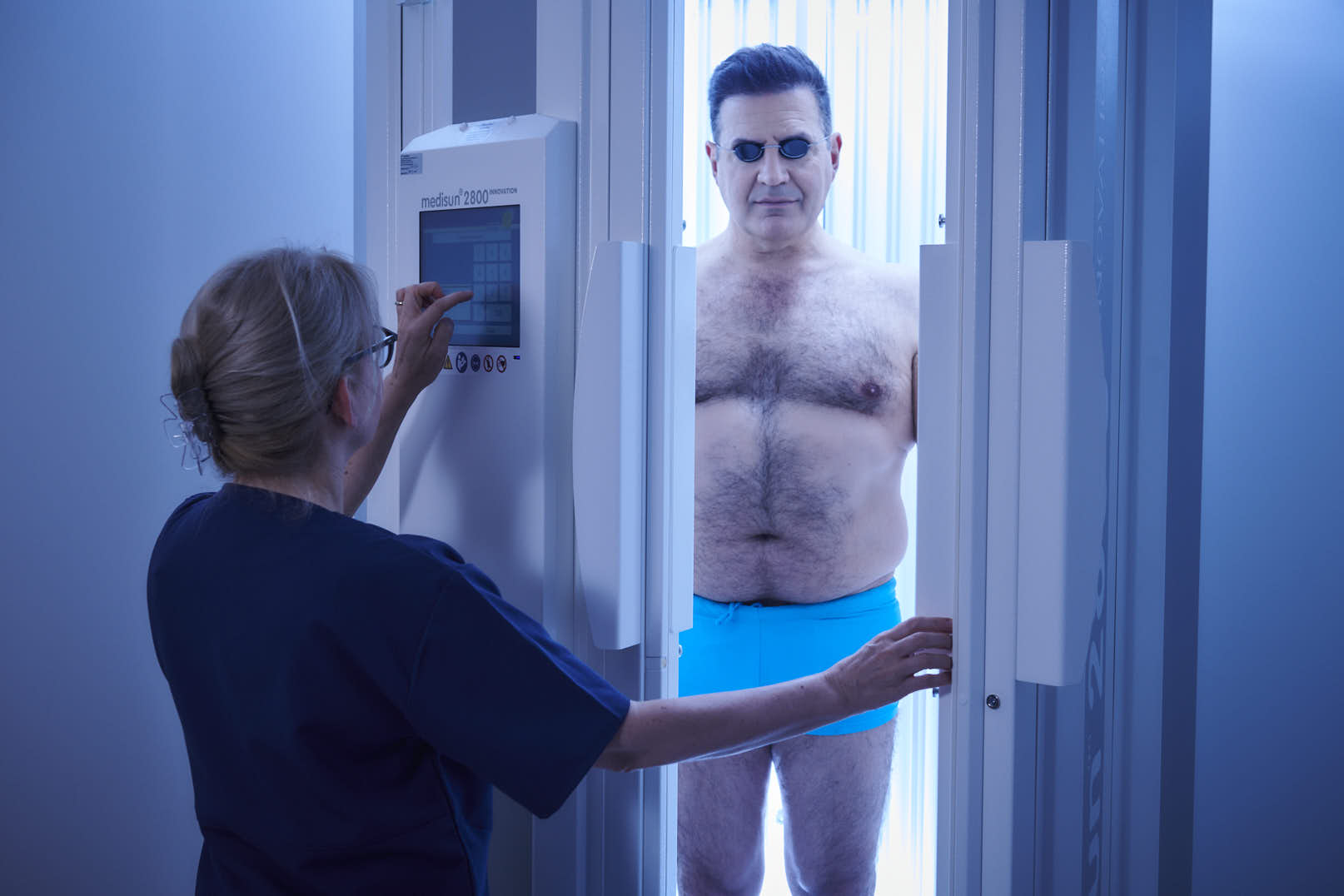What is phototherapy?
Phototherapy is a type of light therapy that uses ultraviolet light to treat certain skin disorders. It works by temporarily shutting down the skin's immune function and reducing the rate of skin cell turnover. It also helps to increase pigmentation, reduce bacteria and build up the skin barrier.
Why is phototherapy done?
Private phototherapy can help in the treatment of skin conditions that are caused by an overreaction of the immune system. These include psoriasis, certain types of eczema, itching skin conditions, vitiligo, skin cancer and some forms of sun allergy.
The treatment has been proven to help reduce inflammation in the skin, prevent flare-ups of symptoms for certain skin conditions and reduce itchiness.

What does phototherapy treatment involve?
Before the treatment begins, you’ll be given protective clothing, eyewear, guards or sunscreen to cover areas of your body that are not being treated.
You’ll then stand in a booth, similar to an upright tanning bed, and the treatment will begin. Treatment usually lasts a few minutes but can be just a matter of seconds depending on your skin condition. If only a small area of your body is affected, you may be given phototherapy treatment using a small hand-held laser device.
Most phototherapy treatment involves having multiple sessions over a number of weeks or months until your skin is clear. You may also need to have maintenance treatments to keep your skin condition under control.
You may feel a warm sensation on your skin, similar to a mild sunburn. Your consultant will discuss aftercare with you and recommend any medications or self-care to help alleviate any discomfort you might have.

Preparing for phototherapy
Depending on which skin condition you have and the size of the area affected, you may need to take certain medications or soak your skin in a solution before treatment. Your consultant dermatologist will discuss and explain any treatment preparation with you at your initial consultation.
Recovering from phototherapy
In the short term, burning and itching can be experienced as well as the triggering of cold sores in susceptible individuals. Your consultant will suggest methods or treatments to help you manage these side effects.
It’s important to wear protective clothing and sunscreen after treatment when you go outdoors to help avoid overexposure to UV light, which can damage your skin.

Risks of phototherapy
As with all treatments, some adverse effects can be experienced, and delivery of therapy requires specialist expertise to minimise this. The team at Welbeck has long-term exceptional expertise in this field.









